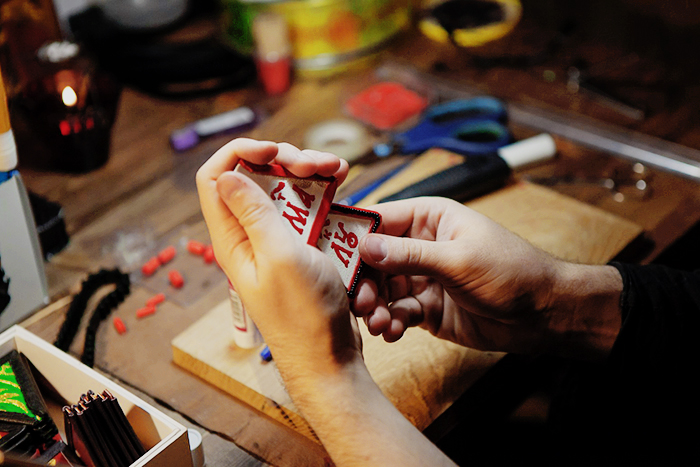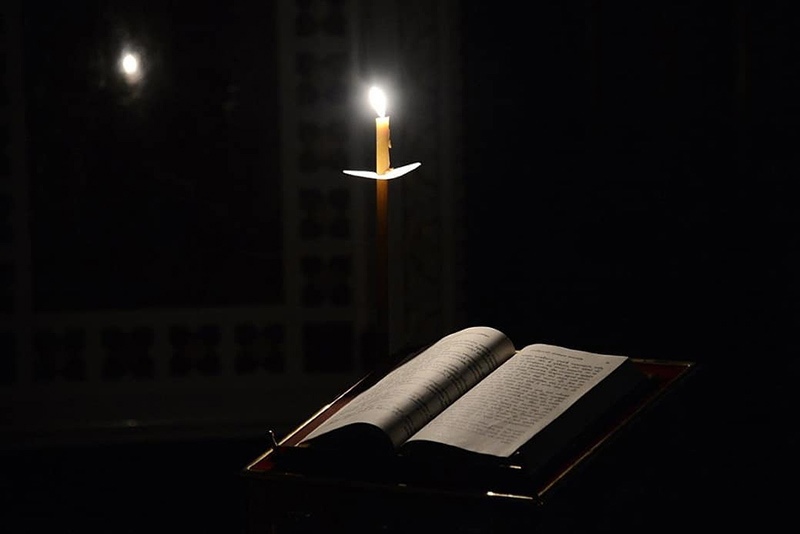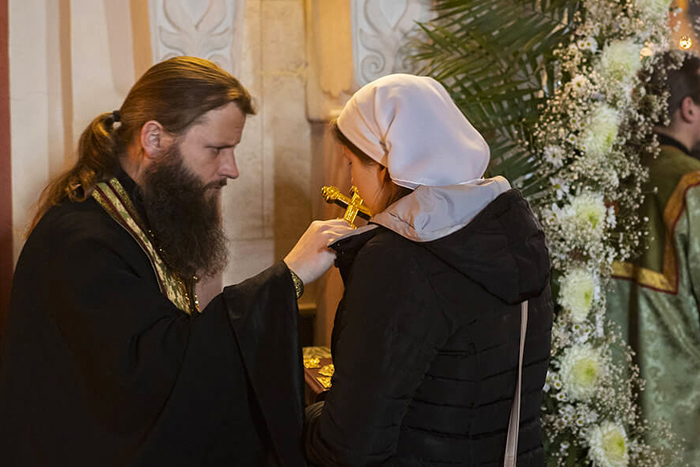
Prayer ropes may vary not only in size but also in the way they are made and the material used.
The most well-known variant of prayer rope is called vervitsa and is made of knotted string. They are woven from a single piece of woolen tape, sometimes in the shape of a cross. Most often the rope has a hundred knots, which are divided into tens with big beads. There are also longer ropes, up to a thousand knots, as well as smaller ones.
Brojanica (Serbian brojanica, that is designated for counting, from broj, number) is a Serbian variant of Orthodox prayer rope. It is reminiscent of homemade needlework. It is a compact and simple version of the vervitsa (the long prayer rope). Thanks to its small size, it can be worn on the arm like a bracelet. Such a prayer rope consists of thirty-three knots, which symbolize the number of earthly years of Jesus Christ. They are made of wool, synthetic fabric, or leather. Then they are joined by an equilateral cross of wood or metal on which a small icon is engraved.
If initially the prayer rope had a purely practical meaning, in Russia the rope was turned into a Lestovka, i. e. a ladder to the heaven. All its elements – steps – acquired some symbolic meaning; it turned from a mere device for counting prayers into an essential tool of prayer for the Old Believers, i. e. Orthodox Christians who preserved the liturgical order preceding the reform of Patriarch Nikon, although now the lestovka is often used not only by them.
A lestovka is a closed circle – a symbol of eternity. It consists of tightly fastened and intertwined hard bean-shaped leather loops, each of which has a folded up scroll with the Jesus Prayer inside. They follow each other in a strictly established order, which remains unchanged for many centuries.

Four triangular (in honor of the Holy Trinity) “paws” (alternatively called ladonki, palms) are sewn at the junction of the ends of the tape. They are connected in two and are frequently decorated with beads and embroidery. They represent the four Evangelists, and their edging symbolizes the teachings of the Gospel.
The gap between the paws, at which the prayer effort commences, is called “the ground”, since it is the first preliminary step in spiritual work. The first 12 small steps tell us about the twelve apostles of Christ. The following thirty-eight small steps symbolize the presence of Baby Jesus in the womb of the Blessed Virgin Mary. Two big steps and 38 small ones between them together make up 40 – a number traditionally perceived as symbolic by the Church. The next 33 small steps represent the years of the Savior’s earthly life, and the last 17 steps remind of the Old Testament prophets who spoke about Christ. The empty place after the steps in front of the paws symbolizes the heaven, and is called accordingly.
According to the commandment of St. Basil the Great, the total number of steps, preserved since the fourth century, is one hundred smaller ones, divided by three bigger ones. There are six separate big steps, located at the upper edge of the paws, which, together with the three big steps of the lestovka, symbolize the nine Angelic ranks. They are a reminder of the Guardian Angels who constantly support people on their long and difficult ascent of the spiritual ladder and prevent them from falling down.
There are seven small beaded or leather shifts sewn inside the lestovka, which are usually not visible from the outside. They denote both the seven Sacraments of the Church and the corresponding number of Jesus Prayers, which the Old Believers’ practice obliges them to read in their daily prayer rule.

It is customary to hold the lestovka in your left hand during prayer, going through its steps from the ground to the sky. Your fingers should be folded in the same way as you would normally do to protect yourself with a sign of the cross.
It is believed in the Old Rite that the prayer rope is inseparable from the spiritual life of every conscious Christian, like the traditional clothes for prayer (azyams, sarafans, etc). Leaving your home without it would be like a clergyman forgetting to put on his epitrachelion or cuffs. By the way, clergymen are also required to have a lestovka on their arm during church services. At the wedding, the couple must also have the most beautiful and expensive prayer ropes in their hands.
The lestovka prayer rope can be men’s, women’s, festive and everyday. They can be basic or lavishly embellished.
Manufacturing and decoration of lestovka prayer ropes was and still is one of the traditional Old Believers’ crafts. Traditionally, various embroideries, ranging from multicolored yarn or beads to gold, have been used for their decoration.
To this day, believers continue to have a strong affection for this kind of prayer ropes, which allows the craft to develop. Our Convent also makes lestovka prayer ropes in one of the workshops at the Rehabilitation Center. However, we do not make them in the traditional format; instead, we produce a modern “adaptation”, with the more usual division of steps into tens.



